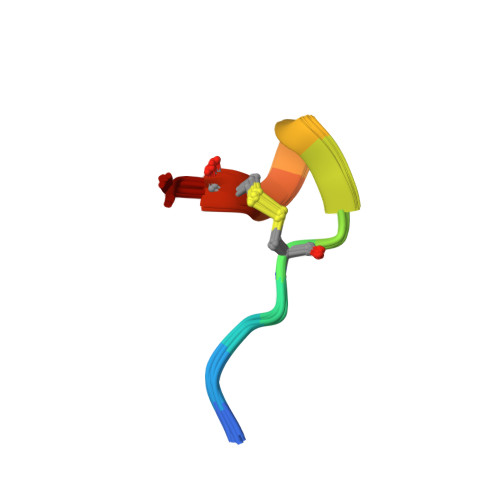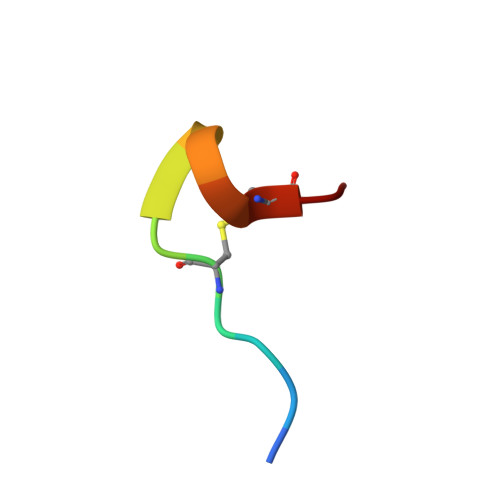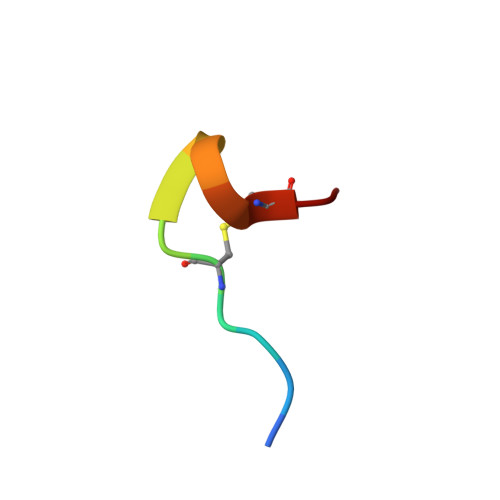Structural and functional characterisation of a novel peptide from the Australian sea anemone Actinia tenebrosa.
Elnahriry, K.A., Wai, D.C.C., Krishnarjuna, B., Badawy, N.N., Chittoor, B., MacRaild, C.A., Williams-Noonan, B.J., Surm, J.M., Chalmers, D.K., Zhang, A.H., Peigneur, S., Mobli, M., Tytgat, J., Prentis, P., Norton, R.S.(2019) Toxicon 168: 104-112
- PubMed: 31302115
- DOI: https://doi.org/10.1016/j.toxicon.2019.07.002
- Primary Citation of Related Structures:
6OQP - PubMed Abstract:
Sea anemone venoms have long been recognised as a rich source of peptides with interesting pharmacological and structural properties. Our recent transcriptomic studies of the Australian sea anemone Actinia tenebrosa have identified a novel 13-residue peptide, U-AITx-Ate1. U-AITx-Ate1 contains a single disulfide bridge and bears no significant homology to previously reported amino acid sequences of peptides from sea anemones or other species. We have produced U-AITx-Ate1 using solid-phase peptide synthesis, followed by oxidative folding and purification of the folded peptide using reversed-phase high-performance liquid chromatography. The solution structure of U-AITx-Ate1 was determined based on two-dimensional nuclear magnetic resonance spectroscopic data. Diffusion-ordered NMR spectroscopy revealed that U-AITx-Ate1 was monomeric in solution. Perturbations in the 1D 1 H NMR spectrum of U-AITx-Ate1 in the presence of dodecylphosphocholine micelles together with molecular dynamics simulations indicated an interaction of U-AITx-Ate1 with lipid membranes, although no binding was detected to 100% POPC and 80% POPC: 20% POPG lipid nanodiscs by isothermal titration calorimetry. Functional assays were performed to explore the biological activity profile of U-AITx-Ate1. U-AITx-Ate1 showed no activity in voltage-clamp electrophysiology assays and no change in behaviour and mortality rates in crustacea. Moderate cytotoxic activity was observed against two breast cancer cell lines.
Organizational Affiliation:
Medicinal Chemistry, Monash Institute of Pharmaceutical Sciences, Monash University, 381 Royal Parade, Parkville, VIC, 3052, Australia.
















